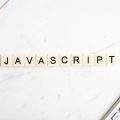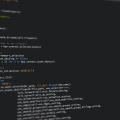For those just starting on their journey to becoming an application developer, the task of getting started can be quite daunting. With so many different coding languages and platforms to choose from, it can be hard to know where to start. To help you get up and running quickly, here is a beginner’s guide for how to get started with application development.
First, you must decide what kind of language you want to learn. There are a variety of coding languages available such as HTML/CSS, Javascript, Ruby on Rails, PHP and more. Once you have decided which language you would like to use for your applications, it is time to find tutorials or online classes teaching the basics of that particular language. This will give you the foundation needed to become an effective application developer.
The next step is learning about the various custom application development services, as they provide tools and libraries for an app developer to create powerful applications without having deep technical knowledge of coding languages. In addition, these platforms also offer debugging tools which allow developers to identify errors within their codebase quickly and easily.
Once you have learned all the basics related to coding languages and platform-specific tools, it is time to build your first application! This process involves designing user interfaces (UIs) followed by programming them using the selected language, combining both frontend and backend development techniques. Finally, after testing your app thoroughly, it can be submitted to respective stores (App Store or Google Play Store), where users can download them onto their devices!
What challenges can arise when learning to develop applications?
Understanding the different programming languages and frameworks is one of the biggest challenges when developing applications. Each language has its own syntax, rules, and conventions that must be followed for an application to work correctly. Additionally, many frameworks have their own tools and libraries that must be used for an application to function correctly. This can make it difficult for beginners to understand how all of these pieces fit together. Another challenge is debugging code. Debugging involves finding errors in code and fixing them so that the application works as expected. This can be a time-consuming process, especially if you are unfamiliar with the language or framework being used.
Tips for Debugging and Testing Your Applications
1. Start with a plan – Before you start debugging and testing, it’s important to have a plan in place. This should include what tests need to be done, how they will be conducted, and what results you expect from them.
2. Use logging – Logging is a great way to track down errors in your code. By adding log statements throughout your code, you can easily pinpoint where an error occurred and why it happened.
3. Test early and often – Testing early on in the development process can help catch any issues before they become bigger problems later on down the line. Additionally, running tests regularly throughout the development cycle can help ensure that everything is working correctly at all times.
4. Automate whenever possible – Automating tests can save time by allowing you to run multiple tests quickly without manually entering data each time. Additionally, automated tests are more reliable than manual ones since they don’t rely on human input for the accuracy or consistency of results.







